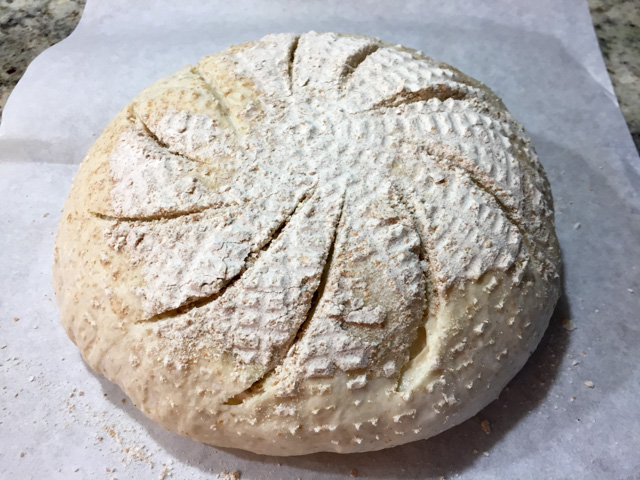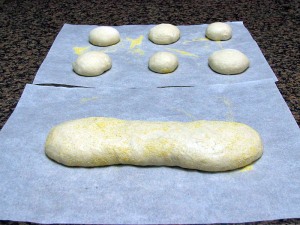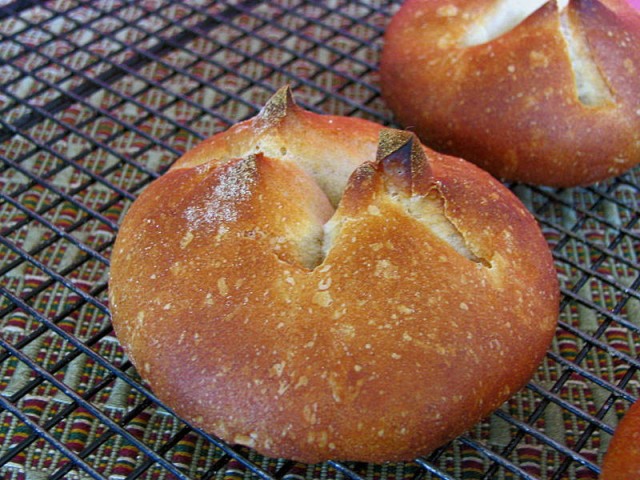My mile-long list of breads “to make soon” was shaken up by a recent post published by my friend Karen. It passed in front of all others, elbowing a Rustic Sourdough here, a Danish Rye there, a couple of Pretzel Loaves, and a few Crumpets. I could not get it off my mind, because not only her bread looked amazing, but she developed the recipe to make it happen in four little hours! Four hours from the time you grab the flour to watching the bread cool down and sing back to you… I simply had to try it. With just a little adaptation, using spelt flour instead of regular whole-wheat. Why? My whole-wheat was in the freezer and I had just a small amount of spelt left in the pantry, which turned out to be exactly the 50g needed for the recipe. It is called flour fate.
KAREN’S FOUR HOUR FRENCH COUNTRY BREAD
overview of the recipe
450 grams bread flour
50 grams whole wheat flour (I used spelt flour)
380 grams 90 to 95 degrees F water
10.5 grams fine sea salt
4 grams instant yeast
Flours are combined with water and mixed. Autolyse 20 minutes. Salt and yeast sprinkled on top. Incorporated by folding
Rest the dough 20 minutes. Fold. Rest 20 minutes. Fold. Bulk proof 2 hours.
(I proofed for 3 hours due to unforeseen circumstances).
Shape. Final rise 1 hour. Heat oven to 450F.
Bake for 40 minutes at, 30 minutes covered, generating initial steam using your favorite method.
Cool completely before slicing.
ENJOY!
to print the full, detailed recipe, visit Karen’s site
Comments: As you can see, I went with a different pattern for slashing the dough, but when it opened, it had a mind of its own. I did not get a star-shaped pattern, but it’s ok. I definitely want to keep practicing. The bread had excellent oven spring, and made all sorts of nice noises while cooling, something that never fails to make a baker happy.
.
The bread was out of the oven a little after 5:30pm on Saturday, and my original plan was to slice it next day. However, when Phil saw the bread he gave me two options: slice it right away and hand him a slice, or witness him going at it with his hands and teeth. I chose the first option, and contrary to all my principles, sliced the bread while it was still warm. The crumb suffers a little, but truth be told, nothing beats the taste of bread fresh out of the oven!
This would be an ideal bread for those a bit afraid of all things yeast. No sourdough starter needed, pretty straightforward method, and wonderful results. Plus it all happens in a reasonably short time, as far as bread baking is concerned.
Karen, you outdid yourself with this one!
Thanks for another great recipe…
ONE YEAR AGO: The Siren’s Song of the Royal Icing
TWO YEARS AGO: Blog-worthy Roasted Butternut Squash
THREE YEARS AGO: Chocolate Currant Sourdough Loaf & Roasted Beet Hummus
FOUR YEARS AGO: Sesame and Flax Seed Sourdough
FIVE YEARS AGO: Spanakopita Meatballs
SIX YEARS AGO: Saturday Morning Scones
SEVEN YEARS AGO: Pain de Mie au Levain








































